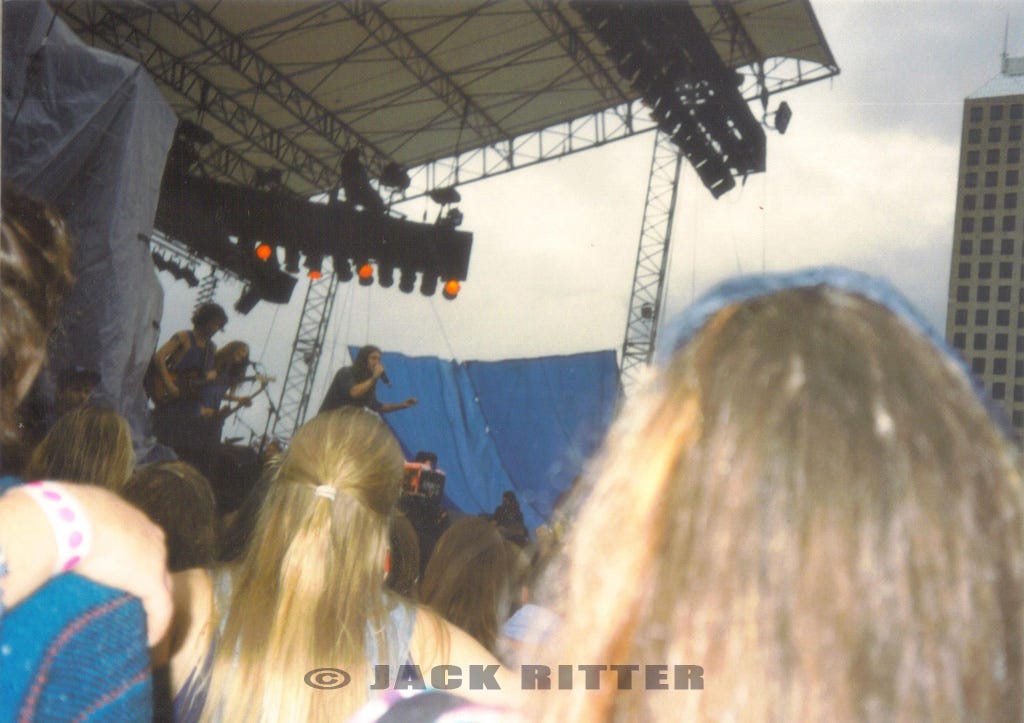
It’s not often in the post-bar-band era of Phish that the group played the same venue twice in one year, and not as part of a multiple-night stand. Even the band’s two 1994 visits to Orlando’s The Edge fudge the phenomenon a bit, as the 4/30 appearance was in the nightclub proper and the 10/22 show was outdoors in the “Concert Field” or, according to the ticket, “The Edge Outback.” But hair-splitting aside, the two trips to theme park land provide a unique opportunity to compare where Phish was near the beginning and end of this marathon touring year.
In broad strokes, spring 1994 was about promoting Hoist, inasmuch as Phish ever does “new album promotions,” while fall 1994 can be thought of as a two-month mobile recording session for A Live One. As far as the level of musical experimentation goes, 1994 came in like a lamb and went out like a lion that would occasionally drop a terrifying 30-minute jam on an unsuspecting crowd.
But comparing these two Orlando shows quickly screws up this easy dichotomy. At setlist face value, the April date is more adventurous than its October follow-up, threaded through with “The Lion Sleeps Tonight” teases (a pre-release Lion King reference near Disney World?) and a “Possum” that playfully reprises every song that precedes it in the second set. October is much more by-the-book, and very heavy on long compositions: Divided Sky, Fluffhead, and Reba eat up big chunks of a relatively brief show.
Surprisingly, given the rapid return trip, there are four repeats between the two shows. Peaches en Regalia and Highway to Hell are the same as they ever were — I can only speculate whether The Edge had a big AC/DC fan on staff, but if so, hopefully he or she (but probably he) appreciated the only time Phish ever pulled off the very on-brand corny Phish-joke of AC/DC Bag > Highway to Hell. Wilson is mostly interesting for testing whether the crowd chant has caught on; absolutely zero people do it in April, and in October it takes the Floridians a full minute of duh-duh, duh-duhs to reach audibility.

It’s the two versions of David Bowie that provide the most interesting longitudinal data. They’re impressively consistent in length: 13:53 on 4/30, 13:31 on 10/22. They both appear in the same slot, after Peaches and Wilson preludes, respectively. But the two take vastly different paths in their improvisational sections.
Maybe it’s an unfair SBD advantage, but I much prefer the earlier performance. When it settles in, it’s immediately on the prowl, with Trey playing brief scribbles and then leaving space for Page (who is tremendous in this jam) and Mike to provide ominous filling. Instead of slowly ramping towards the finish, it recedes. By 8:15, it’s almost a silent jam, just a sprinkle of Page and hi-hat taps. For the next 90 seconds, it’s almost drone-jazz, with Page’s piano in a horror movie lock pattern while Trey conjures up a slowly building roar, which tips over into the more typical sprint to the finish. In a blind taste test, most listeners would probably guess this was the version imbued with the Halloween spirit.
63 shows later, the 10/22 Bowie has far less dynamic range. It’s harder to discern what everyone’s doing through the lens of an AUD, but Trey is certainly not leaving as much space, instead conducting a fast-paced duel with Mike for most of the jam section. As a result, Page is pretty washed out and relegated to providing color, and there aren’t many twists apart from a brief flurry of modulations around 7:25. It’s a more typical Bowie thrill ride swerving between dissonance and consonance, dense in a fashion similar to the previous night’s Antelope, though not as successful a replication as the ferocious Tweezer that follows four songs later.
So there you have it, conclusive n=1 evidence that Phish was in decline over the course of 1994. Surely there will be no subsequent evidence to prove this hypothesis flawed, such as an era-defining and officially-immortalized jam in the very next show. That’s just science.
[Stub from Golgi Project. Blurry photo of <squints> Blind Melon? playing The Edge Concert Field copyright Jack Ritter, apparently.]


